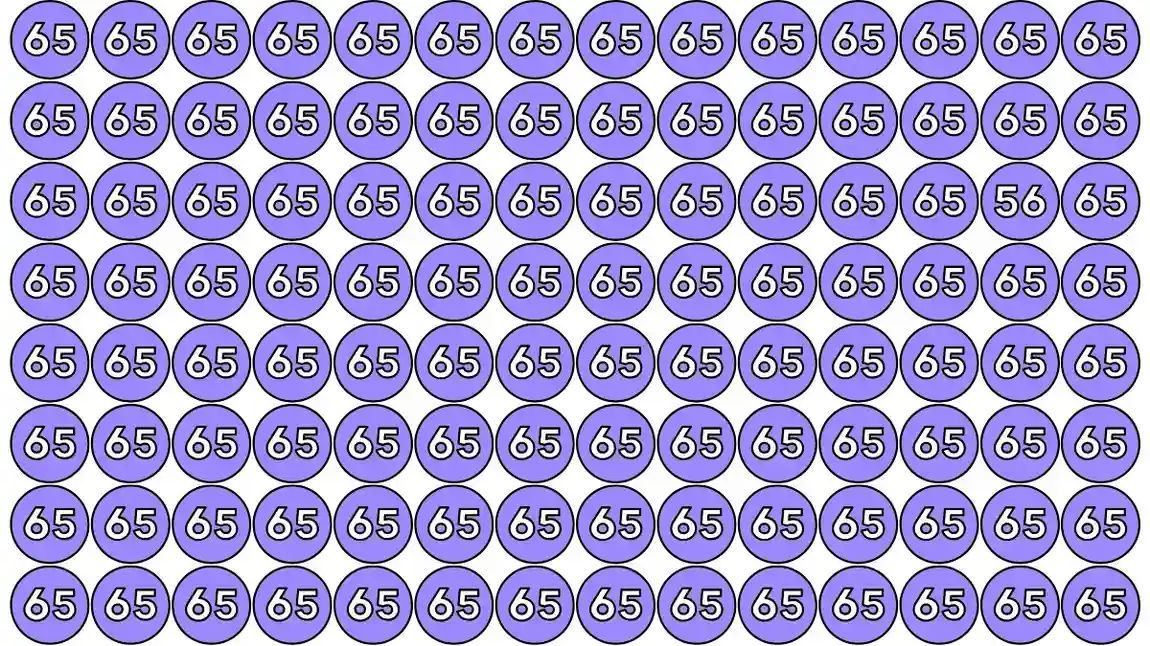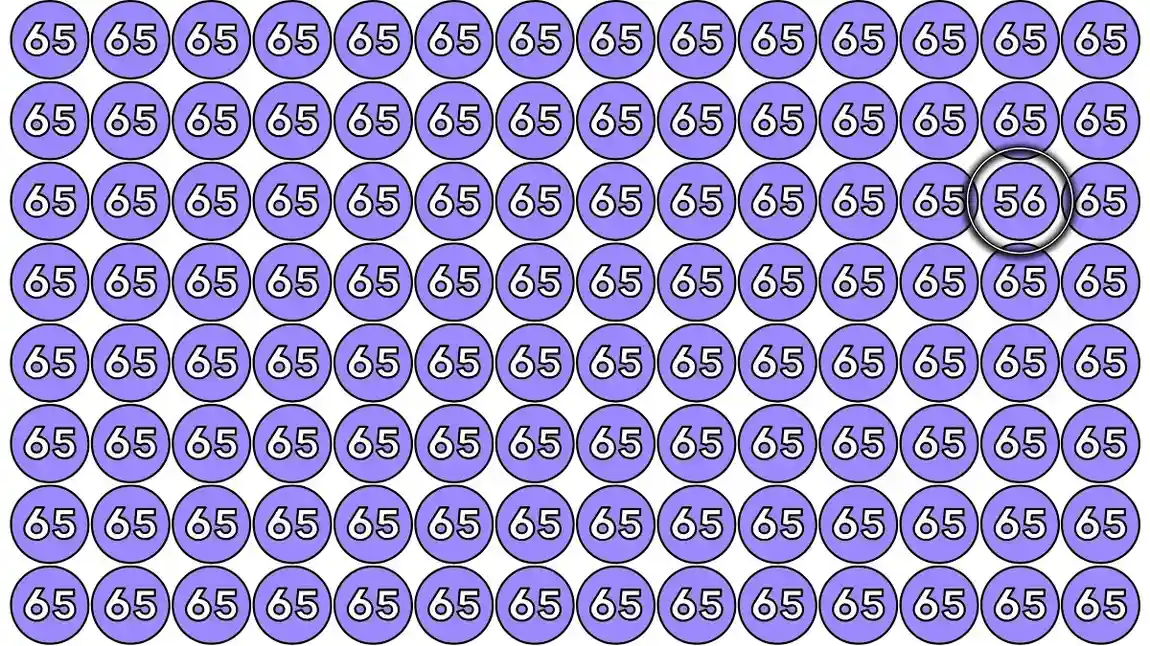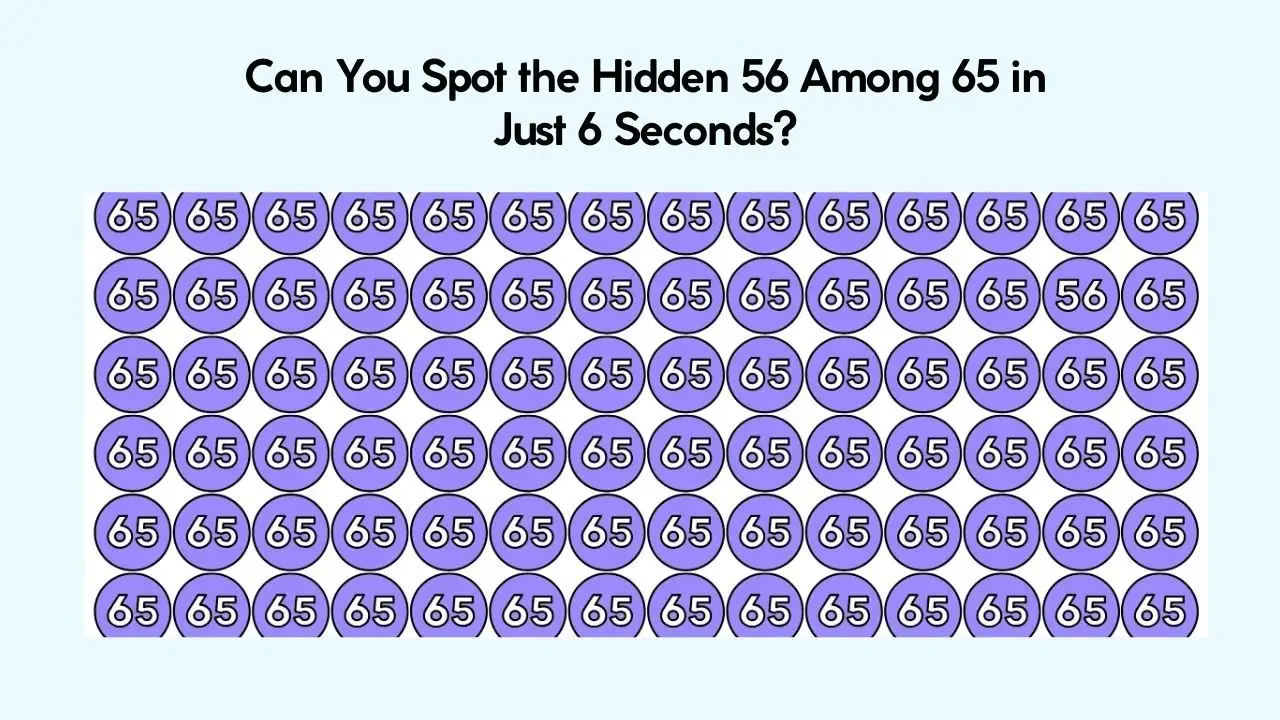For a long time, optical illusions have captivated both researchers and laypeople. They test the brain, deceive the eyes, and frequently provide insight into how our brains interpret visual data. Viewers are asked to locate the number 56 buried among a grid of 65s in only 6 seconds in one particularly intriguing challenge that is now trending online. This seemingly straightforward job is anything but, and it has grown to be a favorite among people who like to challenge their ability to observe.
The Initial Look at the Puzzle
At first glance, the image seems simple: a repeating pattern of the number 65 in tidy rows and columns. A single 56, though, is concealed somewhere in this design. What’s your job? In six seconds or fewer, locate it. The test may seem simple and quick, but it’s more difficult than it seems.
The difficulty is that 56 and 65 look a lot alike, especially when viewed in a grid and under time pressure. The numbers are visually confused due to the reversed digits, and unless you attentively examine each one, your brain might assume they are all the same.
The Science Underpinning the Illusion and Why It Works
Visual crowding is a psychological condition that this optical illusion exploits. The brain finds it more difficult to discern minute variations when a large number of similar parts are arranged closely together. Unless properly instructed to do so, our visual system frequently ignores discrepancies because it has a tendency to generalize recurrent patterns.

Your brain fills in the holes, presuming uniformity, as your eyes swiftly scan the grid in this illusion. Because of this, identifying the odd number—in this case, 56—requires concentration and a keen eye.
Reasons to Give It a Try
These kinds of optical illusion tasks are excellent for mental workout in addition to being enjoyable. They can enhance your ability to recognize patterns, pay attention to details, and digest information quickly. It might be surprisingly helpful to educate your brain to focus on little differences in a world full with distractions.
Thus, try this if you’re game for a brainteaser: Try to locate the concealed 56 in less than six seconds while looking at a grid full of 65s. You may be surprised at how good your eyes are—or how quickly they can be tricked.

Challenges like this serve as a wonderful reminder of how amazing—and occasionally unpredictable—our vision can be, regardless of your success. We are drawn to optical illusions for a reason: they are easy to understand, entertaining, and a window into the complexity of the human mind.

